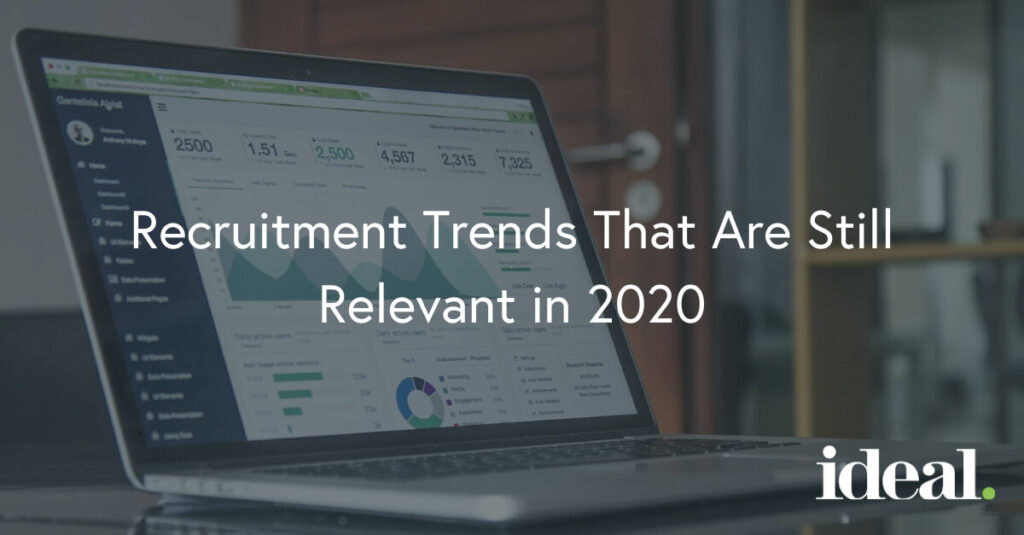
Consider recruiting as a function in 2010. It was two years after a global recession and companies were just starting to ramp hiring back up again.

At the end of 2010, SHRM said HR would be a “power hitter” in 2011. It’s nine years later now, and the contribution of the HR function has drastically evolved.
What’s interesting now is that the entire profile of “what” exactly a recruiter is has evolved. LinkedIn did an end-of-2019 report on the future of recruiting, summarized by HR Technologist, and there are some important takeaways about the growth of recruiting and the shift of the profession to a much more data-driven and analytical one.
Then, Q1 2020 happened, and the big story was COVID-19. It was perhaps the only global story. We are not health researchers or economists, so we won’t spend much time discussing COVID-19, but we cannot ignore it either. Layoffs are a factor, and those layoffs began in hospitality and service industries, but are now spreading to other sectors. Some industries are hiring big-time (high-volume) while others are in major hiring freeze mode for the short-term. Your specific industry will vary from others, but almost all industries right now are watching costs pretty closely, as we don’t know the full duration of the stalled economy at this moment.
That said, what can we project for the rest of 2020 in recruiting, even under that cloud of uncertainty?
Some of the big takeaways
Per the report:
- One in three recruiting leaders come from a cross-disciplinary background. As a result, the recruiter’s role will go beyond the technical requisites associated with hiring, spanning soft skills, technological literacy, and business acumen.
- Technology is perceived as the No.1 enabler for recruiters. That’s why a recruiter’s job description in 2020 could mention industry-standard tools and familiarity with recruitment automation.
- Between 2016 and 2019, the demand for recruiters grew by 63%. This means that top tier recruiters will now be able to take their pick among the best companies in 2020, making recruitment among the most valuable skillsets for an HR professional.
- Roles for talent analytics experts have grown by 111% since 2014. This means that a recruiter’s on-ground responsibilities could now involve a high degree of data science know-how.
If you look at this in terms of big buckets, here’s what you come to:
- Companies increasingly need recruiters.
- They often want them from a varied background.
- They need to be able to work with technology effectively.
- They need to be more data-driven and analytical.
For generations, recruitment was viewed as a “people’s job,” i.e. building relationships, learning about career arcs, etc. It still is that, of course. But more and more it’s becoming someone who is tech-savvy and understands how to look at different data sources and come to conclusions about what the data is saying. It’s become a role that blends interpersonal skills with digital/technological skills. That’s a big evolution.
The role of tech suites in this transition
Tech suites need to be intuitive for recruitment teams to use. They need to combine intelligent automation — to save time and money — with a proven track record of customer success and the ability to integrate with multiple ATS and baseline recruitment systems.
The worst thing that can happen when a recruiting team gets new technology is that it’s hard to use and increases time on task. You want it to be easy to use, decrease time on tasks, and open up possibilities for more strategic work to underscore value. Recruiters should actually be going to their hiring managers and saying “Here is where the talent gaps lie;” this shouldn’t happen the other way around. But the reason why hiring managers often lead those discussions is because recruiters are spending too much time on top-of-funnel, potentially-repetitive tasks. This is where tech should be helping now — and the tech suite itself should be intuitive so that all generations and all experience levels (junior/senior) in recruitment can grasp its benefits and functionality quickly.
As for data-driven, companies need to spend more time training their recruiters. They need to offer fake data sets and walk the recruiters through how to analyze those data sets. What does this mean about where talent gaps lie? What does it mean about the source of hire? What does it mean about the quality of hire? How can you arrive at these conclusions? Recruiters who entered the profession for the “people aspect” should be encouraged to develop that — while also developing their analytical skills.
It’s been said for about a decade now that “data is the new oil” — you’re seeing this tremendously in the COVID-19 outbreak, where everyone is becoming amateur data sleuths when considering infection rates from different countries — and more and more recruitment is headed in that direction, too.
That requires a strong interaction between human recruiters and their tech stack.